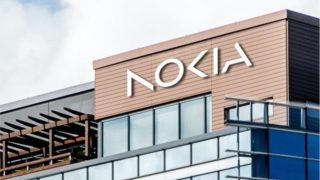While Boldyn Networks is hard at work installing 4G and 5G technology into the London Underground, the neutral host company has one eye turned to other transport networks in the UK.
Multinational market research company Ipsos found that 64% of 16-35-year-olds and 80% of business travellers would be more likely to travel via train if high-quality Wi-Fi was available on their route.
But across the UK, rail operators struggle to meet customer Wi-Fi expectations onboard trains that are travelling through the countryside at high speed and lose cellular coverage in remote areas and tunnels.
“I think the key to solving these problems is less about the technology and really finding the right business model that works for all stakeholders,” Conway reveals.
Unsurprisingly, Boldyn Networks believes a neutral host model is the way forward.
Train operators can boost passenger numbers and customer experience if people are able to stream video and other content or work on their services. However mobile operators are not mandated or required to provide a seamless experience across the length of a route.
“The coverage that you get today on the rail network from a cellular perspective is almost accidental,” Conway says. “The signal you pick up is beamed into the train from a nearby macro site, but there is no dedicated infrastructure along the length of the track”.
Boldyn Networks have had success rolling out 4G and 5G networks across the London Underground, deploying the initial Capex and collecting recurring revenues from the UK MNOs to serve customers.
This same rollout plan would work well across higher density, busier train lines, Conway says, with the underground project perhaps serving as proof that the neutral host model suits the needs of transport corridors in the UK.
Enhancing WiFi
Spotty mobile coverage is a problem for train operators trying to offer WiFi services to their passengers, as the technology relies on a cellular backhaul.
As travellers are becoming used to uninterrupted connectivity on planes, WiFi connectivity on the UK’s train network is clearly lagging.
In the absence of a consistent cellular backhaul, Boldyn Networks has formed a partnership with Netskrt Systems to offer an immediate solution to dips in connectivity in rural areas or tunnels.
Netskrt’s ability to deploy content delivery intelligence in the cloud and video caches on each train has been integrated into Boldyn’s onboard connectivity solution.
Streaming video places higher demand on the limited internet bandwidth available onboard. Many train operators have resorted to either severely limiting or even not allowing access to streaming services over their WiFi to protect connectivity for other applications, such as email and web browsing.
The Netskrt solution, however, saves popular content to caches on trains and makes it available to stream on-demand over the WiFi network. Content is uploaded at stations and the titles available are regularly updated so more popular content is available.
While a good step in improving the onboard experience, the caching solution cannot completely replicate the on-demand digital experience that customers have grown accustomed to while not travelling.
Consistency of service
“Ultimately, I think that consumers and travellers crave for consistency of service,” Conway says. “While train-to-track systems can enhance Wi-Fi experiences, I think a cellular-based approach is the best long-term solution.”
This is because enhancing mobile operators’ networks to make sure they offer a consistent service on a train means consumers can connect with minimal intervention.
“I think sometimes we do obsess as a nation or as an industry as to how many gigabits to the train we should be delivering. And it's a fair call, the things that we use our mobile devices for now are very bandwidth-hungry”.
“But if you've got a decent wireless cell signal from the moment that you get on the train to the moment that you leave with no big drops, you’re going to be pretty happy”.
Building the poles, power and fibre required for a neutral host network to be installed along the length of popular routes is no easy feat and is likely to take a number of years.
But Conway believes that Boldyn has the right shareholders to support such long-term ambitions.
“When they talk quarters, they're not talking 12 weeks schedules, they mean a quarter of a century,” he says.
This long-term approach from the Canada Pension Plan Investment Board (Boldyn’s majority shareholder) sets the company up to capitalise on projects that will take many years to complete.
“Over the next 18 months, I expect we’ll start to see more guidance from the Department of Transport and the rail authorities as to what model they want to roll out,” Conway concludes.
“But we firmly believe the neutral host model makes the most sense”.






